Day of the Dead Pavlova
This post may contain affiliate links. Please read our disclosure policy.
A meringue base served with cream and fresh fruit is a delicious alternative to flour-based cakes.
I made this Day of the Dead Pavlova to honor the festivities that are observed right after Halloween, on 1st and 2nd November in Mexico.
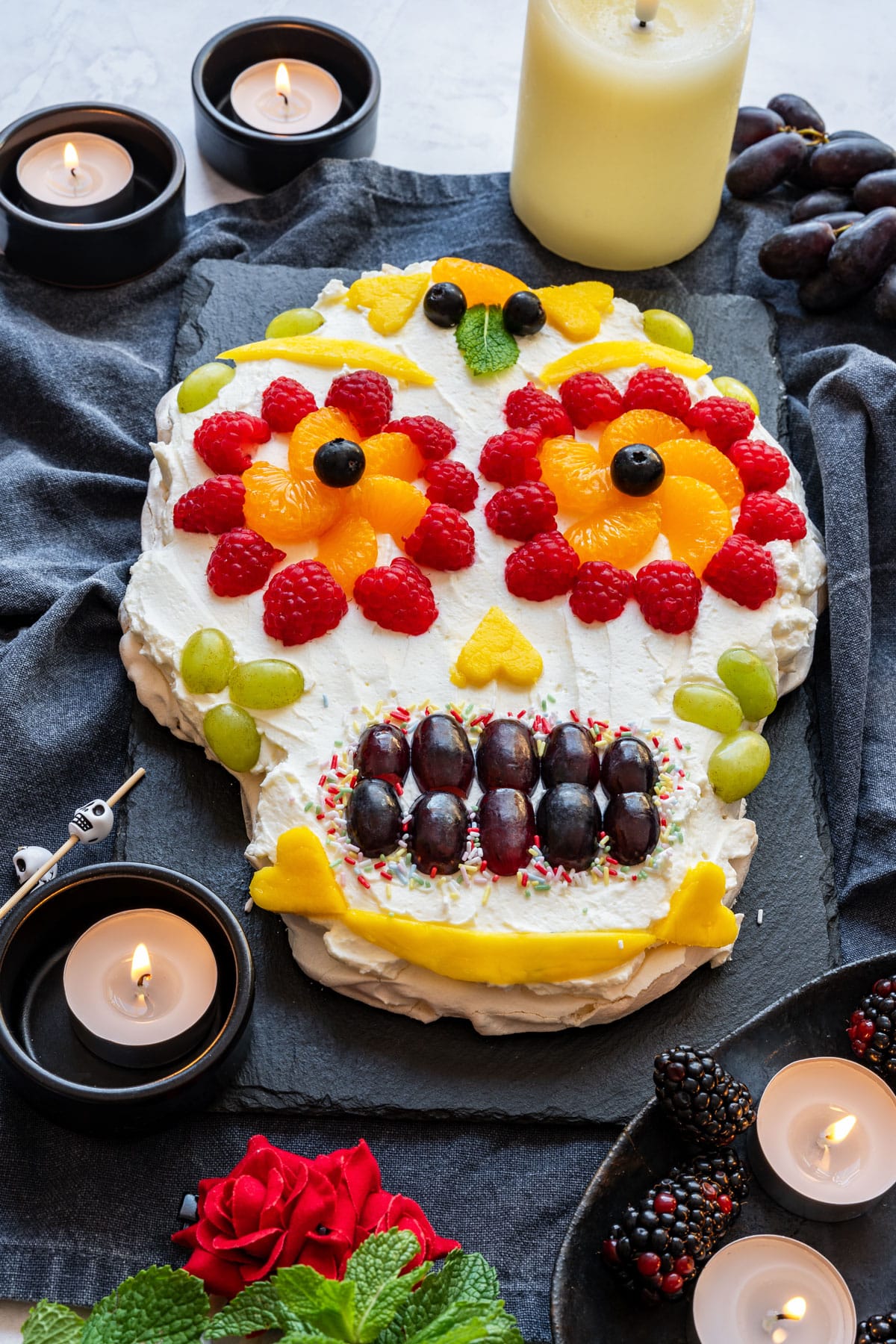
The cake is decorated with fruits to resemble Mexican sugar skulls – offerings to loved ones who are no longer with us.
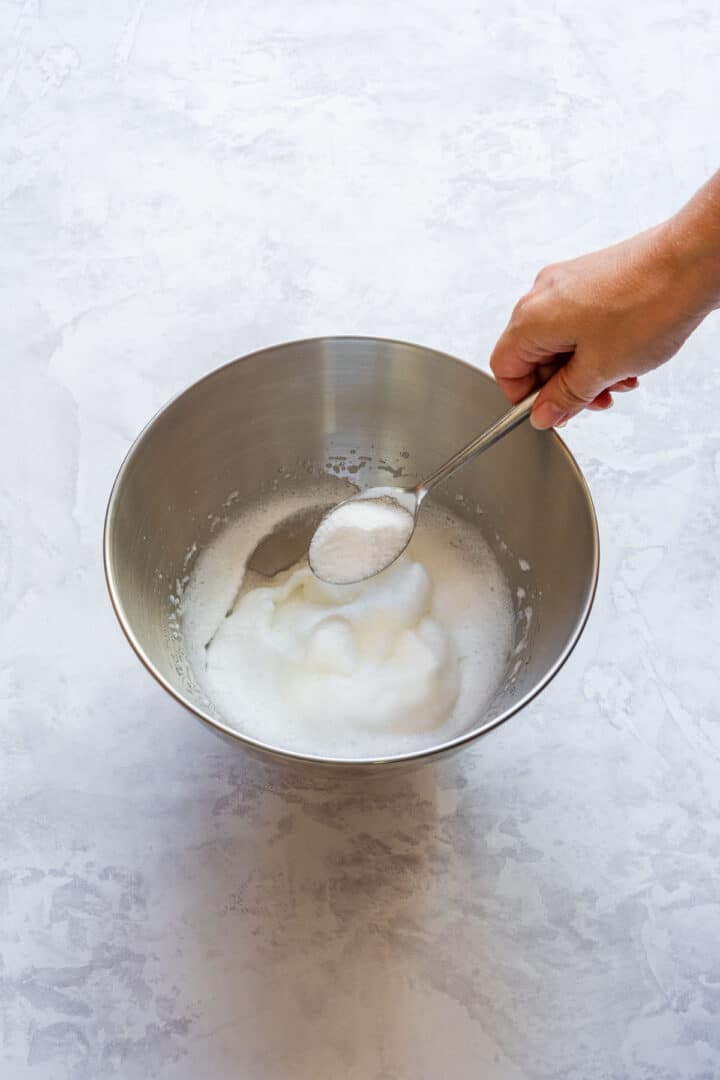
How to make Pavlova from scratch and perfect each time
This is an easy recipe for a tasty dessert with fresh cream, but it can get tricky when making it first time. That is why I included tips and FAQs to help you succeed right away!
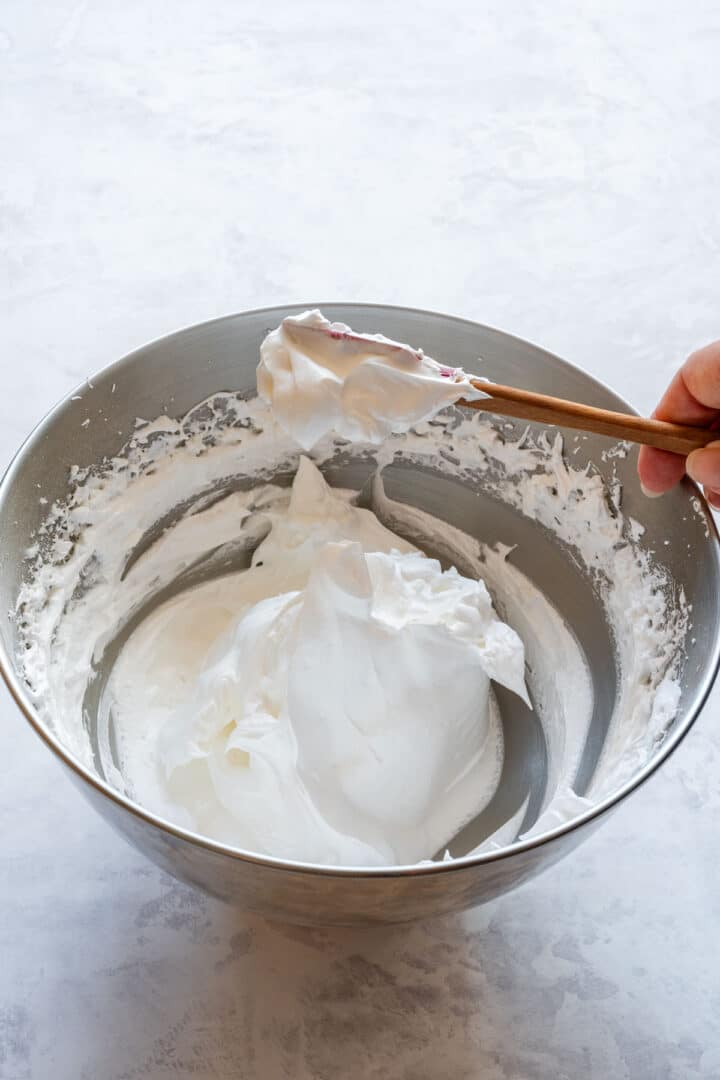
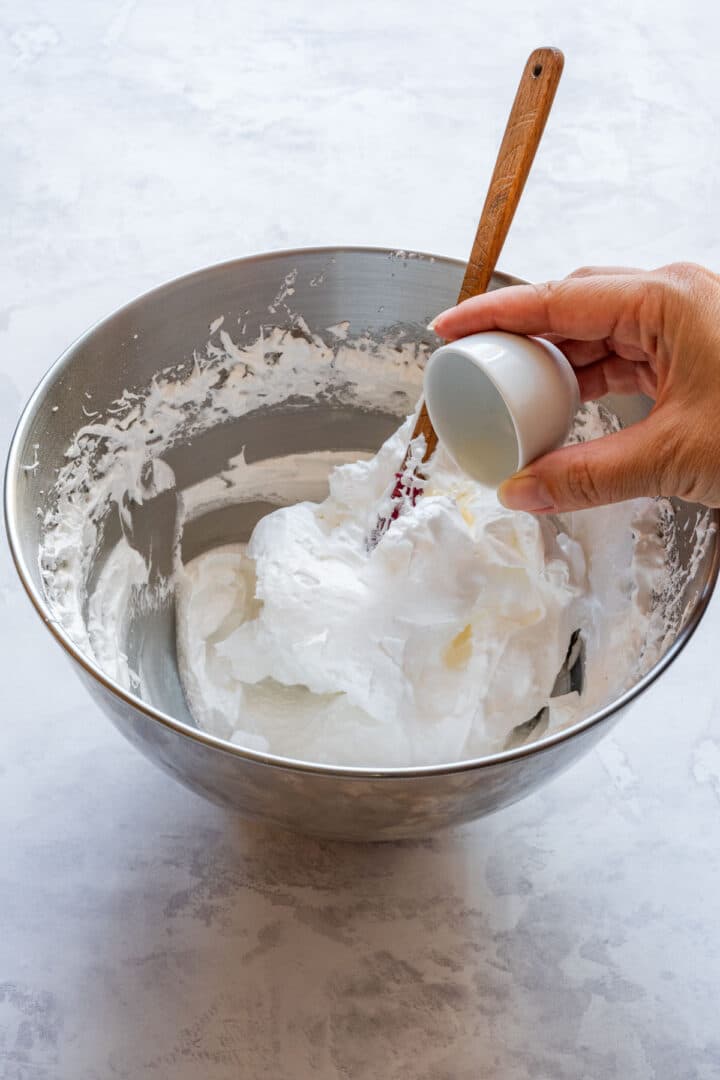
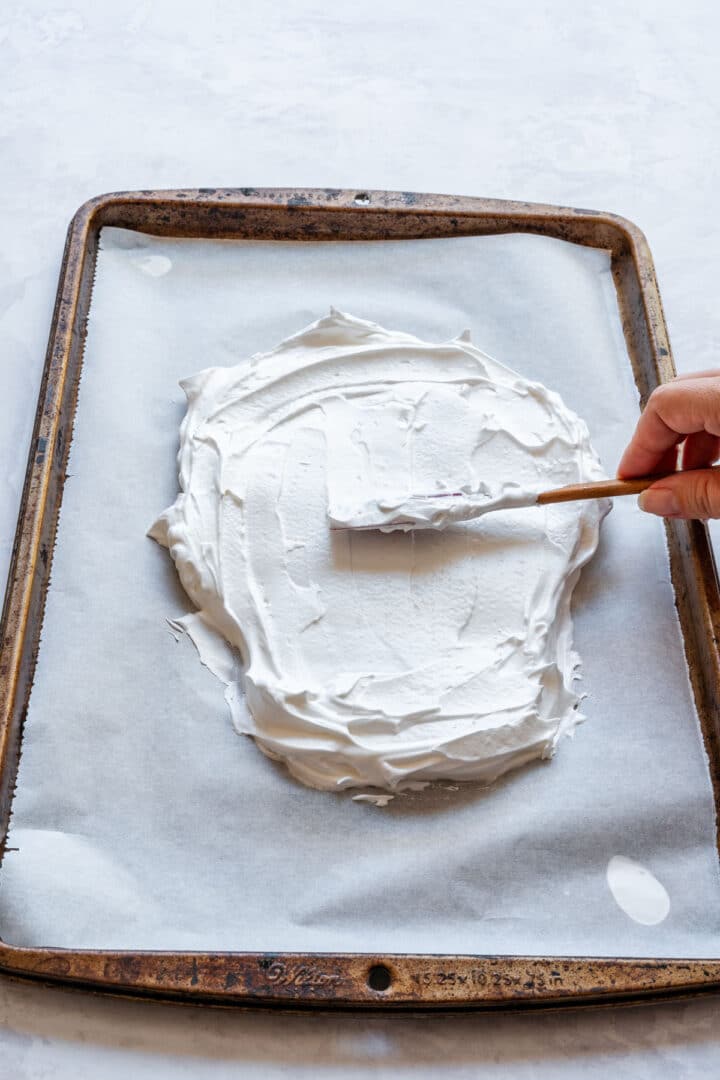
Tips for best results
Use superfine sugar only and make sure it has completely dissolved when whipping the egg whites.
Apple cider vinegar as well as rice vinegar are possible substitutions. Lemon juice will also work but increase the quantity to 1 teaspoon.
My recipe for Day of the Dead Pavlova counts with 45 minutes preparation. This time is mostly needed for decorating the cake with fruits.
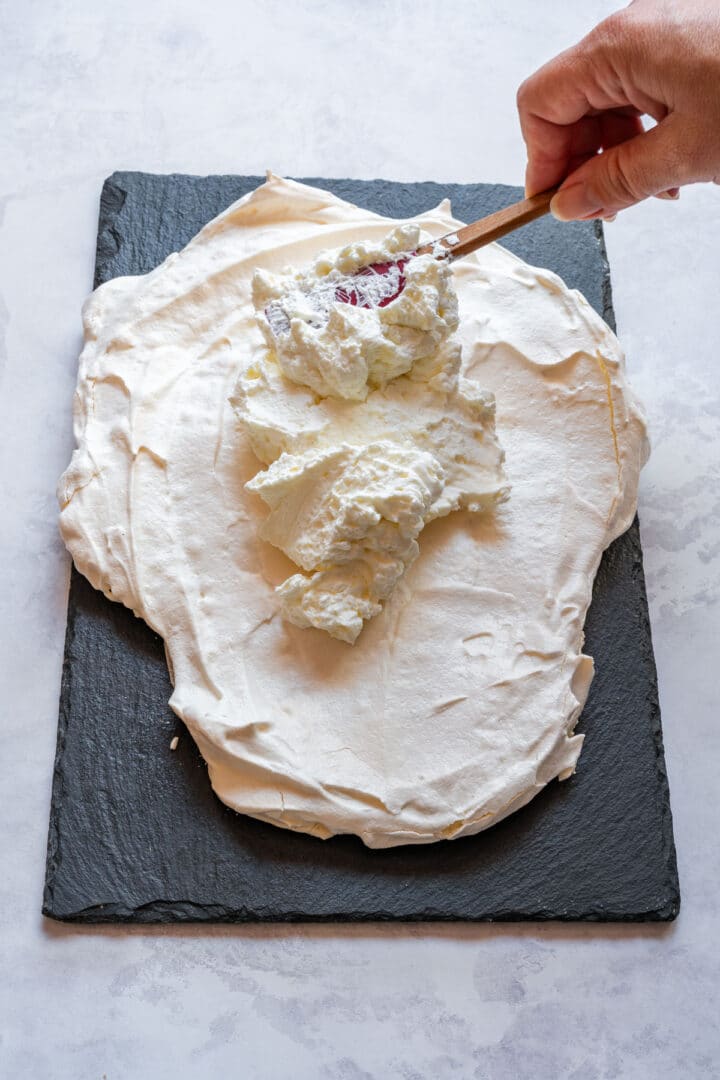
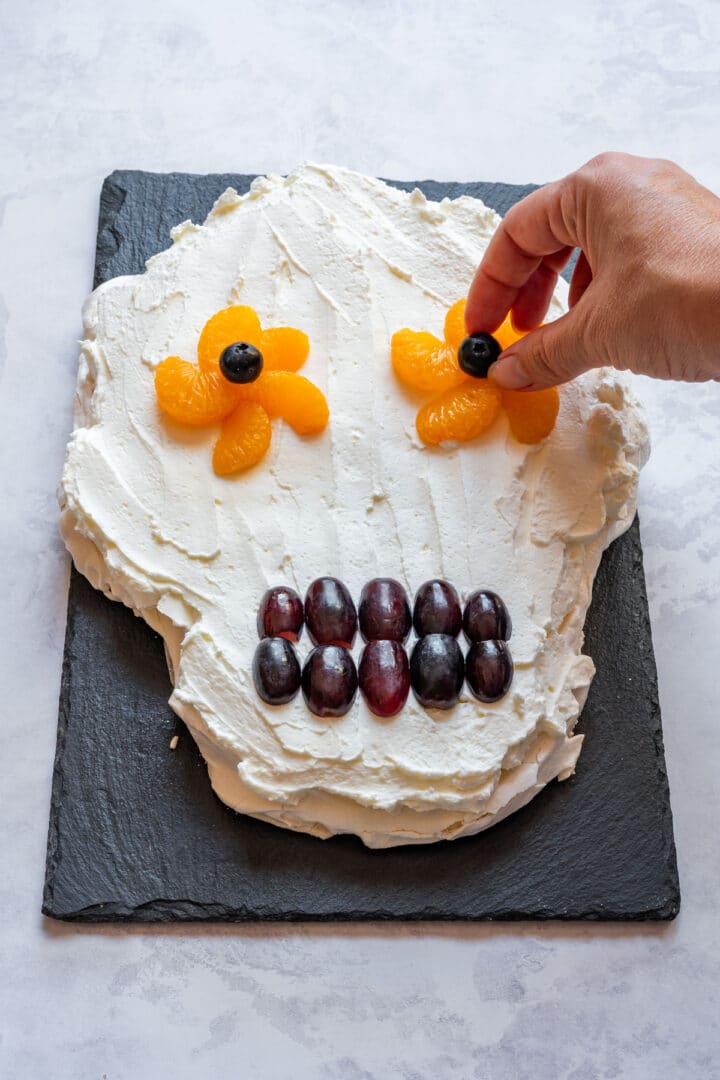
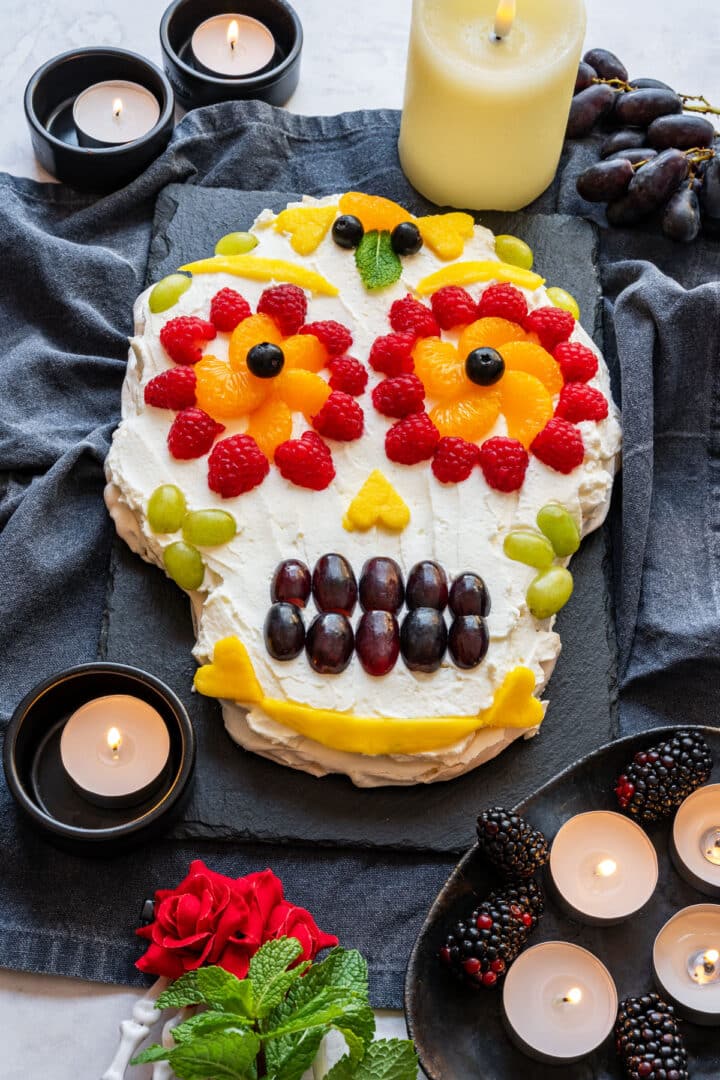
FAQs
You can make the Pavlova base a day in advance and keep it in an airtight container in a cool dry place. If you live in a humid climate, I recommend making it on the day of serving.
Pomegranate, kiwi, papaya or cranberries are great choices. They go well with cream. Avoid using fruits that change color when exposed to oxygen – like bananas, apples or pears.
The closer to the serving time the better. You can whip the cream an hour or two before serving and keep it covered in the fridge. You can also prepare the berries in advance – wash and pat them dry thoroughly, then keep in an airtight container in the fridge until ready to assemble.
Absolutely. You can also add cocoa powder to the recipe and to get chocolate pavlova.
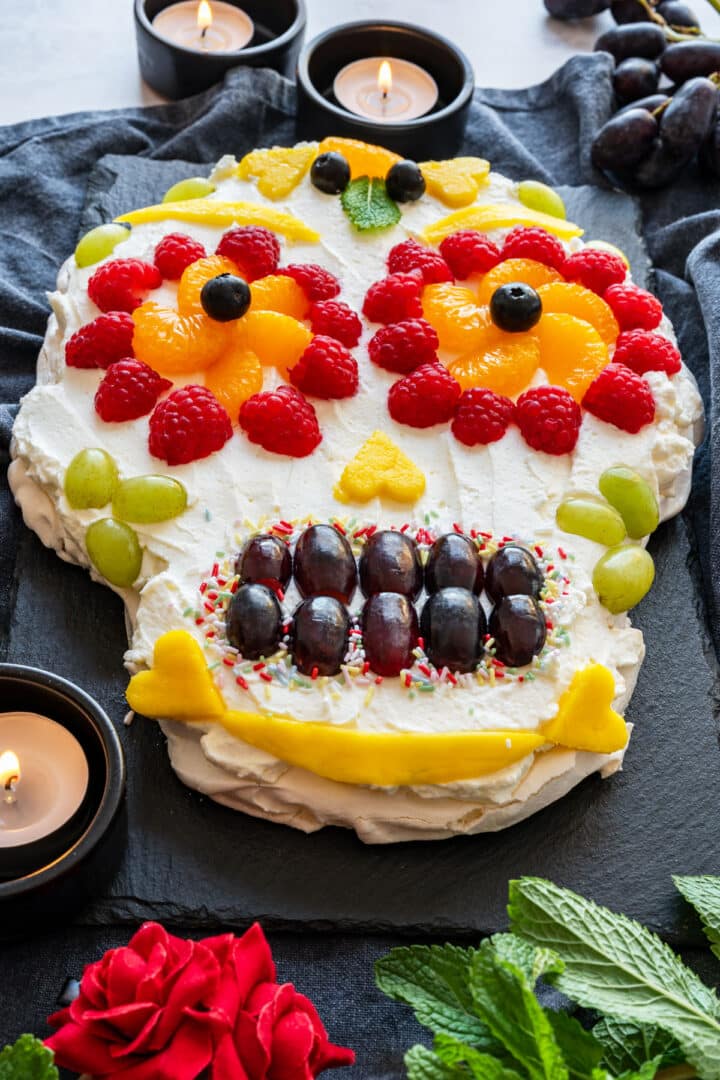
Troubleshooting:
My meringue base got stuck to the parchment paper.
This is more likely due to the sugar crystals dissolving in the oven rather than during the whipping process. They melt and seep through which then glues the Pavlova base to the paper.
The Pavlova base has a light-brown hue.
Lower your oven temperature slightly next time.
Avoid using brown sugar.
Don’t add any dark-colored flavorings.
Know that it might still happen even when following the tips mentioned above. If it happens, don’t worry much about it. It will get covered by whipped cream so it will not be visible to the eye.
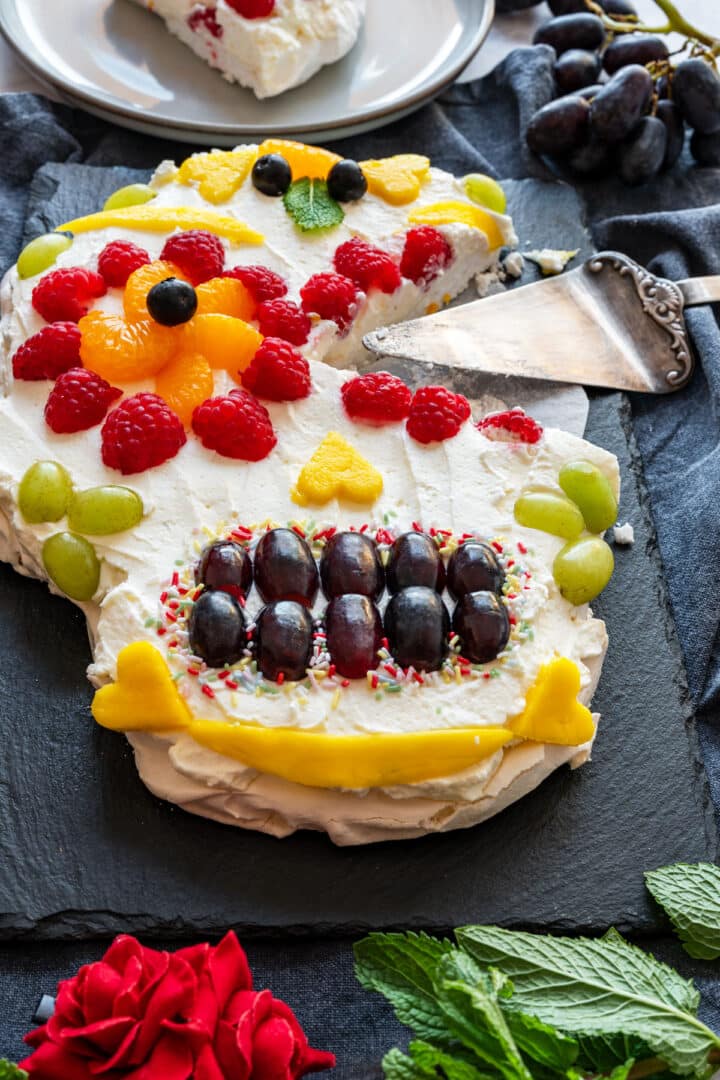
If you are thinking of celebrating Halloween as well as Dia de los Muertos, here are some Halloween recipes:
- Eyeball Deviled Eggs – Deviled eggs styled as eyeballs with simple creepy accents.
- RIP Dessert Shooters – Layered mini cups turned into tiny graveyard treats.
- Halloween Charcuterie Board – Spooky mix of cheeses, meats, fruit and jam.
- Monster Burgers – Stacked burgers dressed up as playful, spooky monsters.
More recipes using egg whites
- Chocolate Pavlova Cake – Double meringue base served with cream and lots of berries.
- Simple Pavlova – This one is served with tasty hazelnut topping instead of the classic cream.
- Walnut Biscotti – Tasty and perfect for gift giving!
Day of the Dead Pavlova Recipe
Ingredients
Pavlova:
- 2 large egg whites at room temperature
- ½ cup superfine sugar 100 grams, see note 1
- 1 teaspoon cornstarch
- ½ teaspoon white wine vinegar see note 2
Whipped cream:
- 1 pint whipping cream 500 milliliters, see note 3
- ½ cup powdered sugar icing sugar
Fruit:
- 1 can mandarins in syrup small can
- 1 small mango thinly sliced
- ½ cup white grapes halved lengthwise
- ½ cup dark red grapes halved lengthwise
- ½ cup blueberries
- 1 cup raspberries halved
Other:
- fresh mint leaves a few, optional
- colorful sprinkles optional
Instructions
- Pavlova: Preheat the oven to 250°F (120°C).
- To a medium mixing bowl, add the egg whites. With a hand mixer, whip until soft peaks form. Then, add sugar, about a tablespoon at a time while constantly mixing.
- Whip until stiff peaks form and the sugar has dissolved completely, 10 minutes or more, if needed (Check by rubbing some of the whipped mixture between your fingers. If you feel sugar, continue mixing until the mixture is completely smooth).
- When done, fold in cornstarch and white wine vinegar.
- Spread this across a 9×13-inch baking sheet lined with parchment paper forming a skull-shape. Spread as wide as you can, making it no higher than ¾ inch (2 centimeters). Use a spatula or spoon for spreading.
- Bake at 250°F (120°C) for 15 minutes. Then reduce the heat to 200°F (90°C) and bake for 60 minutes or until the shell is hard to touch. Then, turn off the heat and leave it to cool down in a closed oven for several hours.
- Whipped cream: In a medium mixing bowl, whisk together whipping cream and powdered sugar until soft peaks form. It should take less than 5 minutes.
- Assembling: Carefully remove the parchment paper from the pavlova shell. Place the shell onto a serving tray or platter. Spread whipped cream over and top with fruits to your liking or follow my photo. The easiest way is to start with teeth, then eyes and then decorate the rest. You also want to think about the size of the eyes, so they fit in your space.
- Serve right away or as soon as possible for best results (see note 5).
Notes
- Superfine sugar (caster sugar in the UK) has finer sugar crystals than granulated sugar and it is important to use it in this recipe.
- Apple cider vinegar will also work.
- Heavy (double in UK) cream is a good alternative.
- The quantity of fruits and berries used depends on how you decorate the Pavlova. This is a small one, so you don’t need that much fruit, but it is good to have extra on hand.
- The meringue shell can be made a day in advance. Either store it in an airtight container or I like to bake it the night before and keep it in the oven overnight. Fruit should be patted dry and can be prepped in advance, then it is easier and faster to assemble. Whipped cream can also be made in advance and kept in the fridge covered for several hours.


Can’t wait to make this!